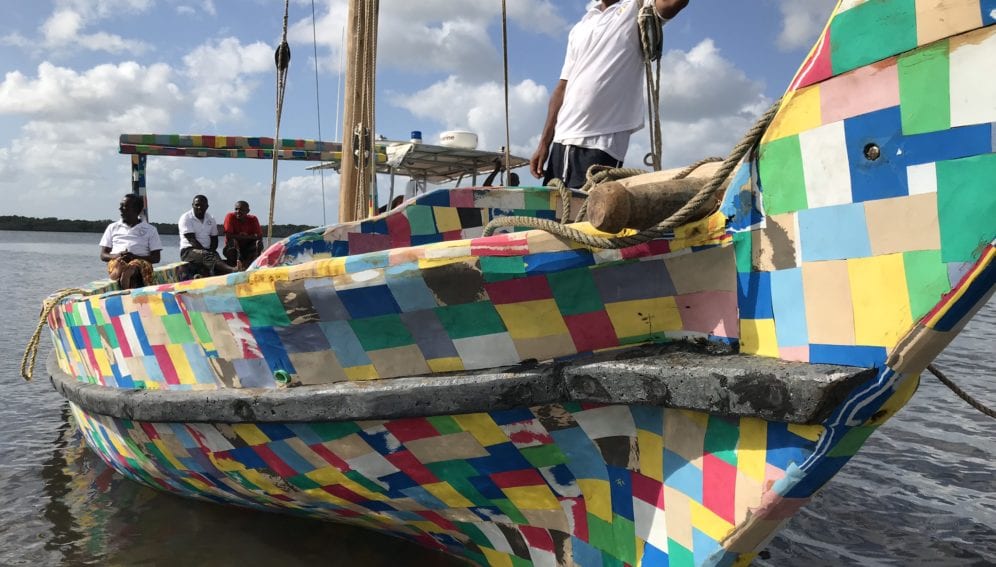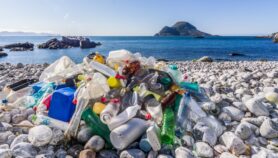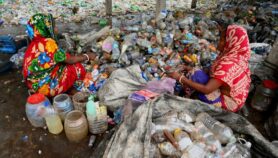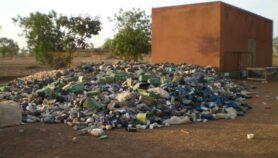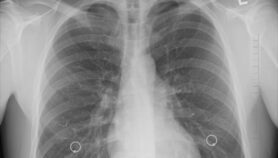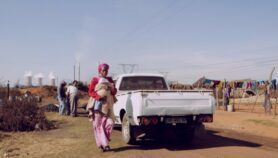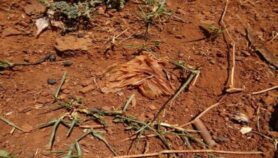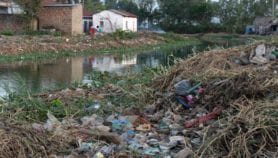By: Jacquie Ogada
Send to a friend
The details you provide on this page will not be used to send unsolicited email, and will not be sold to a 3rd party. See privacy policy.
[NAIROBI] A traditional sailing boat created from plastic waste has completed its first voyage to help raise awareness of the dangers of marine pollution.
According to the UN Environment, more than eight million tonnes of plastic end up in the oceans annually, leading to negative effects on marine wildlife, fisheries and tourism.
The dhow, which is nine metres long and was constructed from over 30 tonnes of discarded plastic collected from Kenya’s beaches and towns, arrived today in Zanzibar — a semi-autonomous region of Tanzania — after starting its voyage from Lamu in Kenya last month (24 January).
“The dhow symbolises our heritage. Plastic pollution is one of the most pressing problems of our time.”
Dipesh Pabari, FlipFlopi project
“The dhow symbolises our heritage. Plastic pollution is one of the most pressing problems of our time,” says Dipesh Pabari, leader of the project dubbed FlipFlopi that led to the construction of the boat.
“This project is a response to that and shows that giving plastic a second life is possible.”
Joyce Msuya, UN Environment’s acting executive director, adds, “African countries have proved that they can take the lead in protecting our environment by showing that plastic waste can be turned to plastic wealth.”
The project has a partnership with UN Environment’s CleanSeas campaign to fight plastic pollution.
The expedition involved several stops on the coastal communities in Kenya and Tanzania to raise awareness of the dangers plastic pose to economies that rely on fisheries.
Msuya tells SciDev.Net that marine animals are known to ingest plastic waste either on the beach or in the ocean.
“If the animal survives, the plastic chemicals get passed up the food chain into humans. Scientists warn that since humans are at the top of the food chain, we have the most to lose. This can result in dangerous health problems such as reproductive issues,” she explains.
According to Leonard Schurg, FlipFlopi engineer, the team had many challenges while constructing the dhow from 2016 to 2019.
“Separating the waste into the different usable fractions proved to be quite a task as it was all done manually, and it requires quite a bit of knowledge to identify the type of plastic fast,” he says.
Schurg adds, “Inadequate funds and managing the different parameters that influence the formation of bubbles were major challenges. Deliberately we have chosen to work with very simple, low-cost machinery to enable copying and demonstrate that it doesn’t require much to make it possible.”
While in Zanzibar, the team plans to educate more people on dangers of polluting the sea with plastics.Koleka Mqulwana, high commissioner of South Africa in Kenya, agrees to the need for more education on plastic waste.
“We need to make sure that education is key among our communities — the source of pollution,” Mqulwana says.
This piece was produced by SciDev.Net’s Sub-Saharan Africa English desk.


